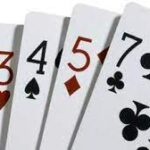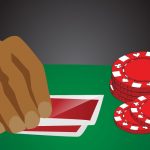COMMON CHARACTERISTICS OF A SMALL STAKES GAME
The most common characteristics of a small stakes game are that the players will be loose and passive. Most of the players will believe that luck is a more important factor in the game then skill; and most of the players will be infected with MUBS (monster under the bed syndrome). All of these characteristics can play games with your head, but in the end, all of these characteristics make for a GREAT game for you as a player because it means the game should be very profitable in the long run.
Putting all of these together, what follows is a common table that you will likely find yourself at. Some players will be playing almost any two cards; most players will be playing at least 50% of their hands. And almost all of the players enter pots preflop by limping instead of raising. If someone does raise, players will still often cold-call the raise (rather then 3-bet) and it is still very common for pots to go multiway. So it is very common for 5 or more players to see a flop and it is very rare that hands will be heads-up on the flop – this is what is meant when we say a game is loose passive. You will often hear the other players bemoaning their luck and you will see players changing seats and asking the dealer for a new set-up to change the decks being played with so that their luck will change. Because these players believe that their big hands will “always be cracked,” they play them very passively both preflop and postflop so that they don’t lose more money with them. Lastly when these players flop nut hands they play them passively because they don’t “want to scare anyone out,” but when they flop very good but not nut hands they still play passively because they fear that one of their opponents has the nuts.
Ok, great, so we know that most games are loose and passive, that most players think the game is more about luck then skill, and that most players are missing value because they are afraid of being up against the nuts (MUBS). But what does this mean for you? Well it means quite a few things:
1) We should play tight (and usually aggressive). Because so many players will be entering so many pots, you are going to see lots of crappy hands taking down decent sized pots. After seeing 64o, 93s, and A6o take down the last 3 hands it can become very easy to start thinking that you should start playing these hands as well. Don’t fall into this trap. The hands we play should only be hands that EXPECT TO MAKE US VALUE. You will often see the term EV in poker forums. EV stands for expected value. And in limit poker the one main rule that you should always have in your head is that you should only be in a hand if it is +EV to do so. That is, you should only play a hand when you have positive expected value. One of the first tools you should download is pokerstove. This will help you analyze what hands are +EV and what hands are -EV to play.
2) Even though you are playing correctly, you are still going to take a lot of bad beats. The very best hand we can have preflop is AA and it only comes around about 1 out of every 220 hands. So when we get it, we expect to win with it and in limit poker AA is always +EV to play preflop. But just because a hand is +EV to play does not guarantee that it will win that specific pot. If you are playing in a pot where your 3 opponents are all playing any pair, any A, any two suited cards, any broadway, and some other connected cards likes 65o, then your AA is only going to win 60% of the time against those 3 opponents. Add more opponents and you will win even less. This means that 40% of the time YOU WILL LOSE. In the end, our big hands (AA-JJ and AK) are still going to be our biggest profit makers, but they are still going to lose a lot of the time. When we do lose it is not because “our big hands never hold up” or we are “the most unlucky person ever,” it is simply because big hands lose a high percentage of the time in multiway pots. Be prepared to lose with big hands. If you are a player prone to tilt after taking bad beats, then learn how to leave the table and take a break until you can come back and play a profitable game.
3) Know your opponents. The majority of your opponents will be like the ones who display these common characteristics, but some of them will actually be decent or good players. Make sure you figure out who is who. And when you do figure it out, use those reads effectively. When a passive player suddenly raises in a multi-way pot it almost always means that he has a huge hand. This isn’t the time to try and bluff with bottom pair.
4) Don’t be afraid of monsters under the bed. Your end goal should be to maximize your profit. In limit poker you maximize your profit by getting other people to put chips in the pot when you are ahead. So, in general, when you have what should be the best hand you should be betting or raising. There are times when you should be putting the brakes on, but don’t fall into the trap of always driving with your emergency brake on.
In the next post I will start talking about preflop hand selection and how we should play our hands preflop.
Submit your review | |










